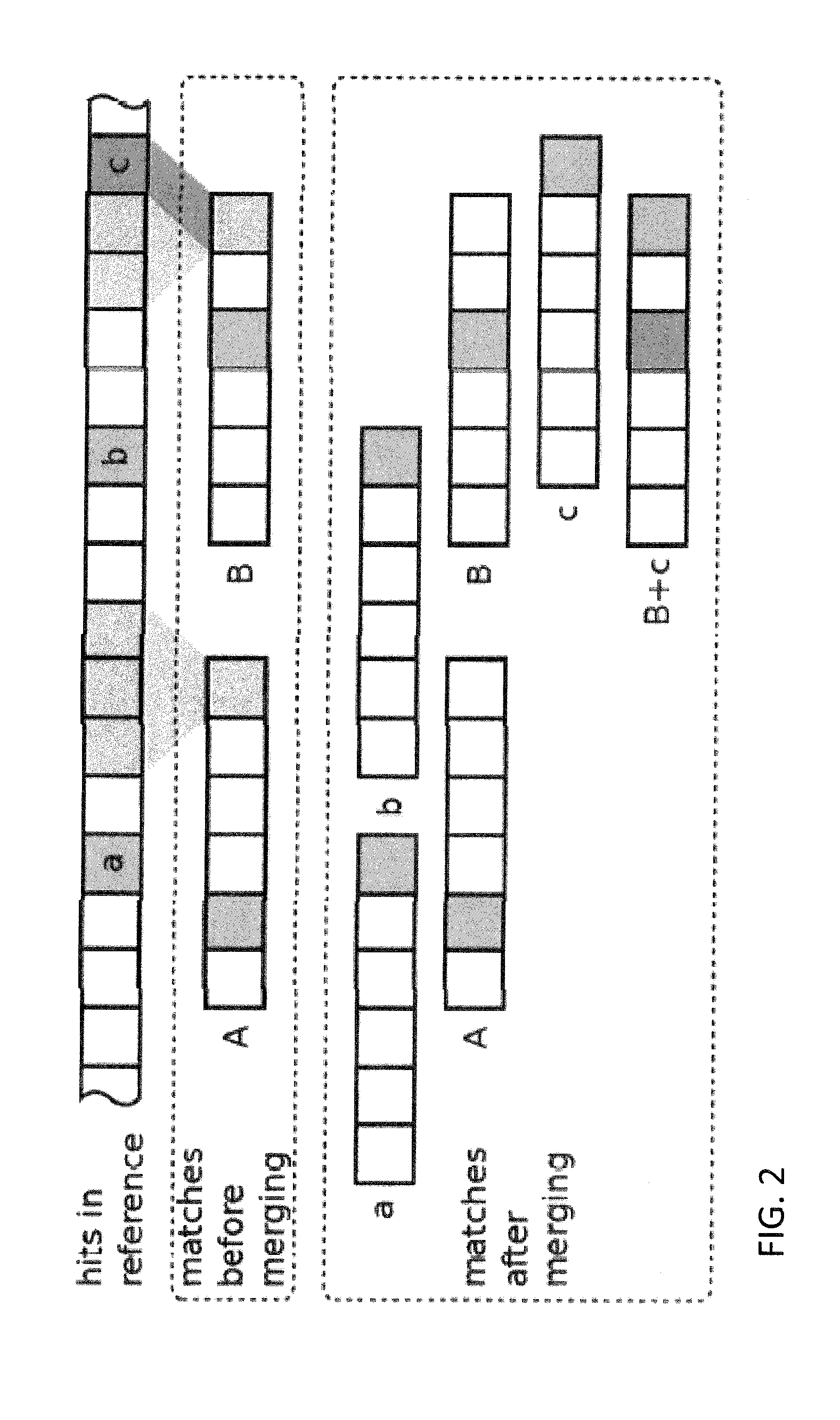Efficient genomic read alignment in an in-memory database
- Summary
- Abstract
- Description
- Claims
- Application Information
AI Technical Summary
Benefits of technology
Problems solved by technology
Method used
Image
Examples
Embodiment Construction
[0057]FIG. 6 depicts the data, platform, and applications layers of the system architecture with the IMDB as the heart piece enabling real-time analysis modeled as a Fundamental Modeling Concepts (FMC) block diagram. In the platform layer the in-memory database IMDB combines data from international research databases and exposes real-time analysis capabilities to the cloud applications. As can be seen in FIG. 6 the in-memory database IMDB in the core computer instance and interacts with external databases (e.g. annotation databases) and with the worker and updater frameworks for data processing. On a higher level different applications are located for real-time analysis and genome browsing as well as for alignment by means of an alignment coordinator.
[0058]FIG. 5 depicts a typical genome-processing pipeline as of today modeled as Business Process Modeling and Notation (BPMN). FIG. 5 shows a genome data processing pipeline as integrated in this research prototype modeled in BPMN. The...
PUM
 Login to View More
Login to View More Abstract
Description
Claims
Application Information
 Login to View More
Login to View More - R&D
- Intellectual Property
- Life Sciences
- Materials
- Tech Scout
- Unparalleled Data Quality
- Higher Quality Content
- 60% Fewer Hallucinations
Browse by: Latest US Patents, China's latest patents, Technical Efficacy Thesaurus, Application Domain, Technology Topic, Popular Technical Reports.
© 2025 PatSnap. All rights reserved.Legal|Privacy policy|Modern Slavery Act Transparency Statement|Sitemap|About US| Contact US: help@patsnap.com



